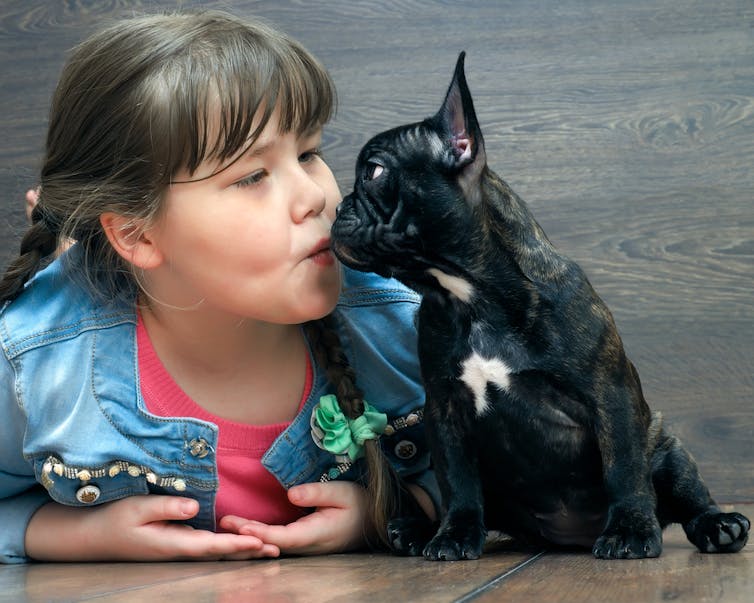An elderly lady and her pet Italian greyhound – sounds like the lovely opening to a sweet story doesn’t it? The story, however, is rather dark. According to a recent medical case report, the greyhound was the likely source of an infection resulting in a lengthy hospital stay and potentially fatal sepsis. Thankfully, this particular patient survived, but the story raises some interesting questions about our increasingly close relationship with the domestic dog.
The bug responsible was Capnocytophaga canimorsus, a bacteria commonly found in the mouths of dogs and cats. It’s estimated that up to three quarters of healthy dogs harbour this bacteria in their mouths. These animals suffer no ill effects and, in truth, humans coming into contact with this bacteria rarely suffer any medical consequences.
But, occasionally, problems might arise, especially if you have reduced immune function. With a reported mortality rate of 30%, awareness of susceptibility to Capnocytophaga canimorsus infection is important for groups who might be at particular risk, such as the elderly. The interesting point about this case is that the patient appeared to have acquired the infection via a lick from her dog and not by a bite as is more commonly reported.
Where infection is associated with dog bites, the consequences can be extreme, including gangrene and amputations. The potential for spread of this bacteria from dog licks, which is often perceived as a friendly, bonding gesture by dog owners, might suggest we should re-evaluate how close we get to our dogs’ mouths.
Dog bites have long been associated with illness. Rabies remains responsible for about 60,000 human deaths annually, mostly in developing countries. A range of other disease-causing organisms are also known to be transmitted from dogs to humans. Close relationships with our dogs might enhance the transmission of nasties, either direct from the dog, or from a contaminated environment. For example, Salmonella causes severe gastrointestinal symptoms and can be acquired by exposure to infected faecal matter.
Toxocara canis is a parasite that can cause blindness in humans and infection also comes from close contact with infected dog poo. The horrific sounding visceral larva migrans is a rare complication of Toxocara infection, when the larval parasites migrate haphazardly through the body tissues, leaving a trail of damaged tissue in their wake. Equally, there can be few dog owners who haven’t experienced the minor, short-lived irritation of a flea bite.
On the positive side
So, how healthy is our relationship with our pet dogs? Many reports detail the diverse benefits of dog ownership, from physical activity benefits to their ability to improve and promote social interactions. There are even historical accounts of dogs being encouraged and trained to lick human wounds to encourage healing. The scientific validity of this method might be questionable, but anecdotal reports remain about the potential healing value of canine saliva.
Dogs are increasingly being used as therapy animals in hospitals, hospices and other medical facilities. This is much more about their physical and behavioural attributes than their wound healing ability, however. In these environments it is important that infection control is high, both for the benefit of the patient and the welfare of the visiting dog. With good hygiene, transmission of diseases can be kept to a minimum and, despite this recent report, the value of dogs as companions and therapeutic interventions probably outweighs the risk.
Dogs, how deadly is your human?

We cannot ignore the fact that we also transmit pathogens to our dogs. Zoonotic diseases are those that can be spread from humans to animals and back again. Studies have demonstrated that dogs can carry multi-drug resistant strains of bacteria, many of which have probably been transmitted to them by humans. We have a responsibility for minimising infection risk – yes from our dogs but also to our dogs.
So, should you worry about your dogs’ deadly saliva? In general no, although these rare stories are often a timely reminder that while we often share our lives, homes and sometimes our beds with our dogs, they can harbour “partners” that might not be such ideal companions for us.
The next time your dog tries to lick your face, instead of worrying about_ Capnocytophaga canimorsus_ infection, it might be more prudent to think about what your dog last licked – that might be a scarier consideration.

